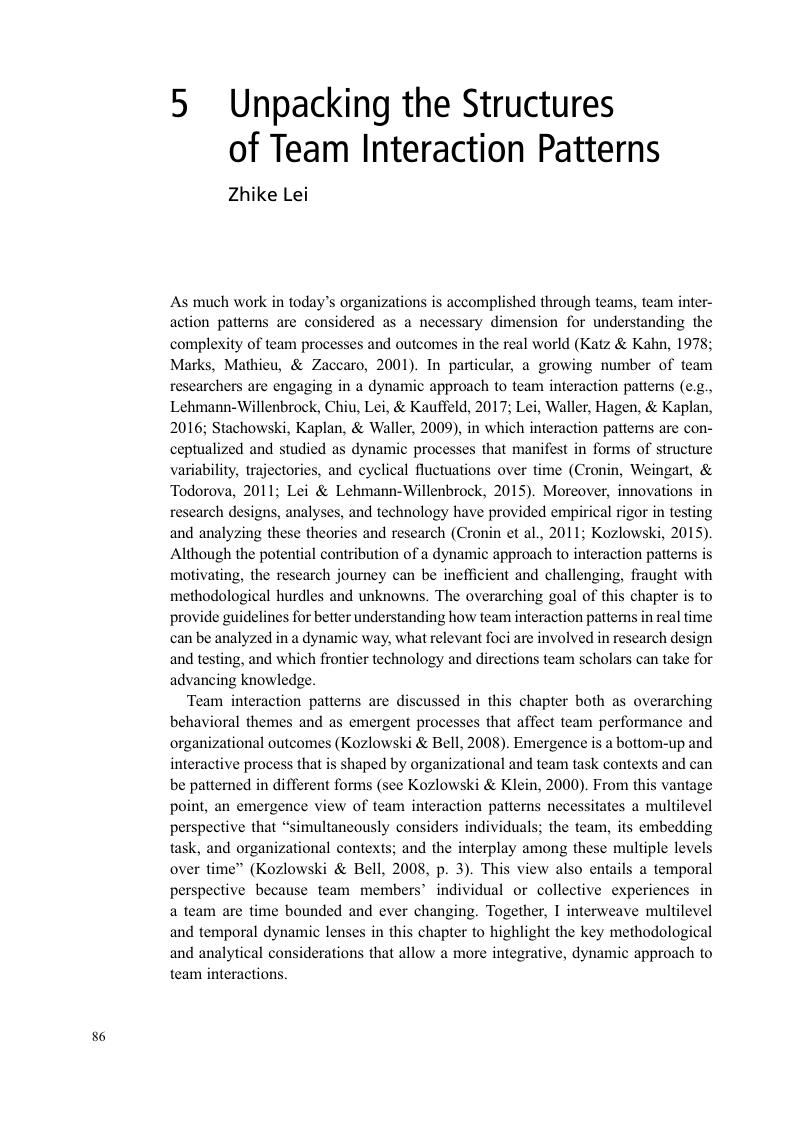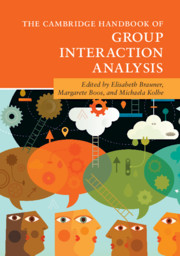Book contents
- The Cambridge Handbook of Group Interaction Analysis
- The Cambridge Handbook of Group Interaction Analysis
- Copyright page
- Dedication
- Contents
- Figures
- Tables
- Contributors
- Editors’ Preface
- Organization of This Handbook
- How to Work with This Handbook
- Part I Background and Theory
- Part II Application Areas of Interaction Analysis
- 3 Dyadic Interaction Analysis
- 4 Observing Group Interaction
- 5 Unpacking the Structures of Team Interaction Patterns
- 6 Coding Nonverbal Behavior
- 7 Behavioral Coding in Animals
- 8 Beyond Coding Interaction
- Part III Methodology and Procedures of Interaction Analysis
- Part IV Data Analysis and Data Presentation
- Part V Coding Schemes for Interaction Research
- Appendix
- Index
- References
5 - Unpacking the Structures of Team Interaction Patterns
from Part II - Application Areas of Interaction Analysis
Published online by Cambridge University Press: 19 July 2018
- The Cambridge Handbook of Group Interaction Analysis
- The Cambridge Handbook of Group Interaction Analysis
- Copyright page
- Dedication
- Contents
- Figures
- Tables
- Contributors
- Editors’ Preface
- Organization of This Handbook
- How to Work with This Handbook
- Part I Background and Theory
- Part II Application Areas of Interaction Analysis
- 3 Dyadic Interaction Analysis
- 4 Observing Group Interaction
- 5 Unpacking the Structures of Team Interaction Patterns
- 6 Coding Nonverbal Behavior
- 7 Behavioral Coding in Animals
- 8 Beyond Coding Interaction
- Part III Methodology and Procedures of Interaction Analysis
- Part IV Data Analysis and Data Presentation
- Part V Coding Schemes for Interaction Research
- Appendix
- Index
- References
Summary

- Type
- Chapter
- Information
- The Cambridge Handbook of Group Interaction Analysis , pp. 86 - 103Publisher: Cambridge University PressPrint publication year: 2018
References
- 1
- Cited by



